Wood is an environmentally sustainable and renewable material whose use is not only aesthetically pleasing but also guarantees high standards of durability and flexibility in construction.
- African Mahogany
- American Mahogany
- Aphzelia
- Ash
- Balsa
- Bamboo
- Beech
- Birch
- Cedar
- Chestnut
- Elm
- Iroko
- Larch
- Limba
- Lime
- Maple
- Meranti
- Oak
- Pine
- Poplar
- Sapele
- Spruce (Red Spruce)
- Spruce (White Spruce)
- Teak
- Walnut
- Wenge
- Wild Cherry
Much depends on the type of wood chosen, of course.
Let's list, in alphabetical order, the main types of wood available on the market today, from Spruce to Wenge, indicating their main use and the characteristics that distinguish them.
In this article we will talk about solid wood, leaving out composite woods such as plywood, MDF and others.
Before we begin, however, we should explain the meaning of some terms that are often used in the descriptions of the various types of wood.
Wood glossary
Shrinkage
This is mainly represented by changes in the volume of wood in the transition between environments with a different degree of humidity.
Elasticity
This is the property by which wood tends to return to its original shape, once the deforming action exerted on it by a solid body has ended.
Flexibility
This is the property of wood to bend or twist beyond the limit of elasticity, retaining the deformation without breaking, once the bending force has ceased.
Buckling
This is the ability of wood to bend when expansion or contraction occurs on one side only.
Hardness
Defined as the ability of wood to resist the penetration of other bodies.
Plasticity
It is the property by which wood, subjected to compression in the direction normal to the fibres by a resistant and extended body, deforms permanently over the entire compressed surface.
African Mahogany (Grand Bassam)
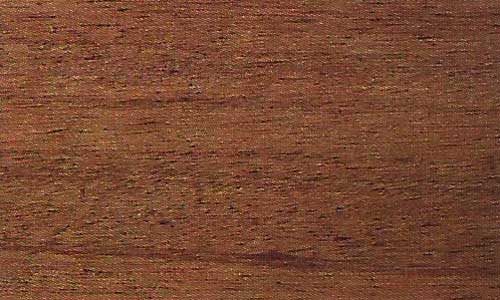
Characteristics
Heartwood colour varies from very pale pink to a deeper reddish brown, sometimes with medium to dark reddish brown stripes. The colour tends to darken with age.
The colour of African mahogany tends to be darker than that of the American variety.
Origin
Equatorial Africa.
Common use
An excellent wood for high quality interior and exterior joinery.
Used for interior panelling, furniture, parquetry.
Workability
Easy to work, although it tends to split slightly when nailed.
Mechanical properties
Long-lasting wood with low to medium impact resistance.
American Mahogany
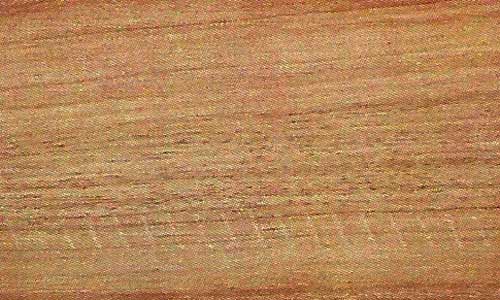
Characteristics
One of the best types of wood for furniture is certainly mahogany.
Mahogany (also called Honduran mahogany) is an expensive hardwood whose colour varies from a medium brown to a deep red brown, depending on its age.
It is a very traditional, versatile and popular type of wood. It is also a popular choice for use in veneers.
Origin
Cuba, Central and Latin America.
Common use
Furniture, turned objects, veneers, musical instruments, shipbuilding and carving.
Workability
Generally very easy to work with both power and hand tools. (Except for figured grain sections, which may fray or splinter during processing).
Mechanical properties
Poor flexural strength. Very poor impact resistance. Durable to very durable.
Aphzelia
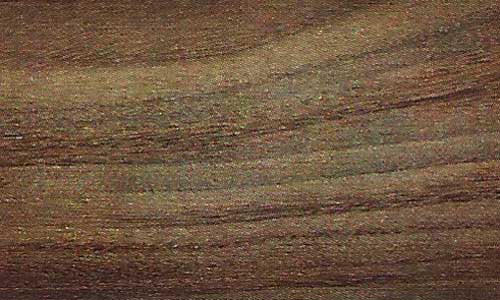
Characteristics
It is certainly not among the most known types of wood, at least in Europe.
The timber is more commonly marketed under the collective name 'doussie'. It has a reddish-brown colour that tends to darken with age.
Origin
Africa and equatorial Asia.
Common use
It has very good resistance to moisture and salt air. The wood is often used as a surface material for outdoor velodromes.
Workability
Generally regarded as a somewhat difficult wood to work with because of its interconnected grain, which causes tearing during processing.
Afzelia also has a pronounced matting effect on cutters.
Gluing and finishing can be variable and some species contain water-soluble yellow deposits in the pores which may present difficulties in staining or finishing with water-based products.
Mechanical properties
It is a very durable wood type with high flexural strength but medium to poor impact resistance.
Ash
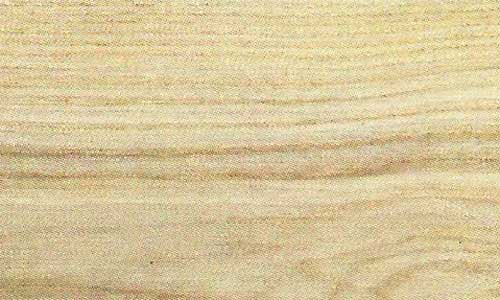
Characteristics
Ash is a hardwood that is known for its excellent bending capabilities.
It is mainly used for bent furniture such as chairs with curved backs.
Ash wood is white or pinkish white in colour, with a silky sheen and somewhat greasy to the touch.
Origin
Europe, North America, Japan, Manchuria.
Common use
It is used for interior decoration, furniture and panelling, parquet flooring and tool handles.
It is a wood that takes gloss beautifully.
Ash is among the least expensive hardwoods available on the market and its cost rivals that of oak.
Workability
Heavy and hard wood, elastic and tough.
It is an excellent ribbing wood and has a medium capacity for sawing.
Mechanical properties
The impact resistance is medium to high, while the flexural strength is somewhat lower.
Overall, it is a remarkably elastic and durable wood.
Balsa
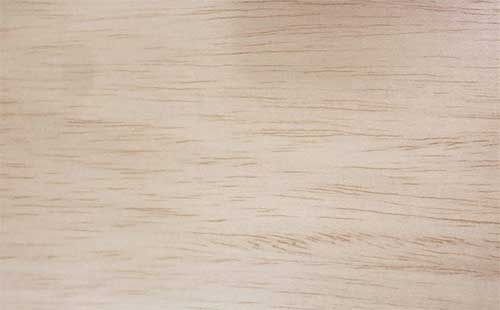
Characteristics
Balsa wood is one of the lightest commercial woods (it has a lower specific weight than cork) and is strong and full of pith.
The wood of a four-year-old tree weighs approximately 0.13 kg per cubic decimetre; the wood becomes heavier as the tree ages.
Origin
The balsa tree, of the Bombacaceae family, genus Ochroma, grows in Central America, from southern Mexico, through Ecuador, to northern Brazil.
Common use
Balsa wood is largely composed of plant parenchyma, a connective structure of thin-walled cells, which makes it valuable for insulating refrigeration equipment.
Due to its lightness, balsa sawdust is also used for filling plastics.
Its cellular quality also makes it valuable for the construction of lifebuoys, insulating coatings, floats, rafts and any other use where, cost permitting, low weight is a determining factor.
This wood is also widely used for modelling, also thanks to the fact that it can be easily cut and shaped with a simple cutter.
Workability
Very easy to machine and saw.
Mechanical properties
The crushing strength with compression parallel to the grain is 0.08 atmospheres; the breaking strength with tension perpendicular to the grain is 7.82 atmospheres.
In terms of strength-to-weight ratio, balsa wood is stronger than many construction timbers and under this ratio is preferable for use in various types of construction.
Bamboo
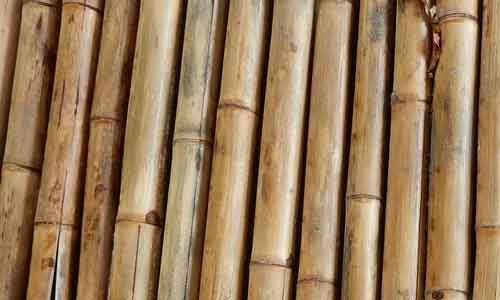
Characteristics
Of the Graminaceae (herbaceous family), the Bambusae group includes grasses that are particularly important to the economy of eastern nations.
The plants included in this group are extremely diverse in nature, ranging from small, inconspicuous species to the largest known species of grasses: some, in fact, have slender upright stems, called culms, that approach 40 metres in height.
Once dry, the wood takes on a characteristic honey colour which makes it suitable for both rustic and modern buildings.
Origin
The area of origin of bamboo is mainly South-East Asia, although bamboo groves (bamboo forests) are experiencing a certain development in Italy too, as it is an extremely adaptable plant.
Current use
Bamboo is characterised by its woody, hollow, gnarled stems with full knots, commonly used by western peoples to make fishing rods, or to create chairs and furniture with a characteristic oriental look.
Among eastern peoples, however, bamboo is used much more widely. The hollow stems can be used as pipes for piping water, or as containers for storing water and other materials.
Split stems can also be flattened and used in the construction of canopies, boats, etc.
Workability
It has a medium aptitude for sawing and, on the whole, is fairly easy to work. The stems are processed when they are still green as they then lose much of their flexibility and become harder.
Mechanical properties
Bamboo has often been referred to as vegetable steel, so much so that the largest stems are even used for structural parts of buildings.
It is a strong yet light wood, and the floors resist scratches very well.
Bamboo is very hard at the structural level, but it is also very flexible. It is also fire resistant (compared to other woods), as bamboo burns at very high temperatures.
Beech
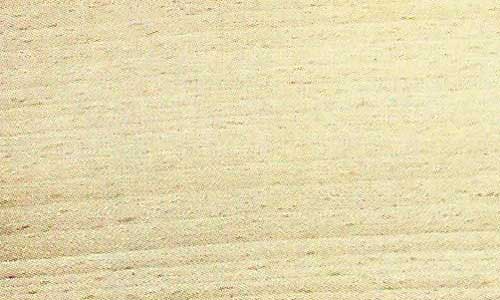
Characteristics
Beech wood is a wild card in the sense that it can be used for a wide variety of purposes.
The wood is whitish in colour when cut, but later turns a light reddish colour and is very homogeneous and heavy.
Origin
Europe, where it is distributed to create extensive beech forests.
Common use
The use is practically unlimited and ranges from firewood to railway sleepers, from furniture construction to exterior cladding.
Workability
It is not one of the most workable woods, but it is not very difficult to cut.
Mechanical properties
The solidity of beech wood is superior to that of oak.
However, the wood has poor elasticity and is not very resistant to weathering.
This last characteristic, however, can be easily overcome by the fact that the wood absorbs impregnating and waterproofing products perfectly, which allows a considerable extension of its life.
Birch

Characteristics
The wood of Betula pendula, the wood most commonly used, is whitish or ivory white, compact, very flexible, elastic and resistant.
Origin
Finland, Russia, and generally the cold districts of the northern hemisphere.
Common use
Suitable for bodywork and cooperage work, in the manufacture of pylons and skis.
It can be turned easily and is therefore used in the manufacture of handicrafts and light-coloured furniture which are elegantly marbled, especially if the wood from the transition zone between the stem and the root is used.
Workability
Generally easy to work with both power and hand tools, although wild-grained boards may cause splintering during processing. Folds, glues and finishes well.
Mechanical properties
High flexural strength. Medium impact resistance. Perishable.
Cedar
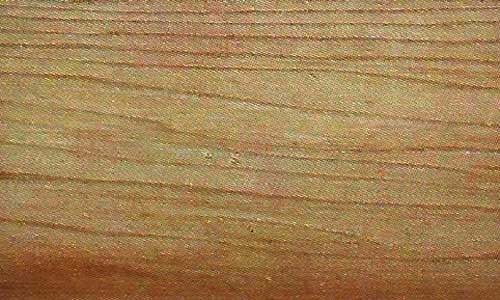
Characteristics
This is one of the most interesting plants for logging.
This is due to the imposing size of the trees, whose wood is devoid of resin channels but rich in oil, so that it has a characteristic aromatic and persistent smell, at least as far as the Red Cedar variety is concerned.
The inner part of the trunk tends to be reddish or brownish-violet. The sapwood, i.e. the outer part, is pale yellow in colour.
Origin
United States and Canada.
Common use
The wood is mainly used for the production of houses and bridges, for railway sleepers, for flooring, etc. It is therefore an excellent source of timber.
It is, therefore, an excellent construction timber with light and durable characteristics.
Workability
Soft wood type, easy to work, both mechanically and manually.
Gluing, nailing, painting and finishing of cedar wood is also easy.
Mechanical properties
Strong and elastic wood with excellent properties when it comes from its natural habitat, where growth occurs slowly and evenly.
In this case, it is a long-lasting wood that is also very stable over time.
Chestnut
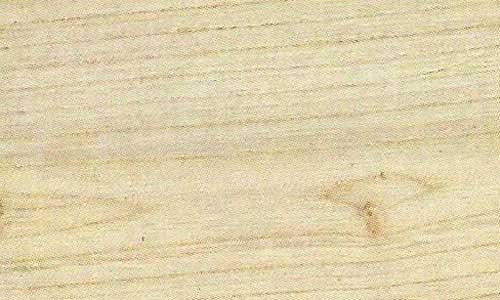
Characteristics
In addition to its delicious fruits, the chestnut tree also produces a wood that is highly valued for its weather-resistant characteristics.
The colour of the wood tends to be light from young trees, while it tends to tawny-reddish for older trees.
The wood is not dissimilar to that of oak, so that it is easy to confuse the two varieties.
Origin
Europe, North Africa, Asia Minor.
Common use
Chestnut wood is one of Italy's most important forest products and its use ranges from joinery to the production of barrel staves.
Most of the wood, however, is used for the production of poles for fences or earth retention, because the high tannin content makes this wood particularly durable and, although it is not a cheap wood, that cost is amortised in a very long time.
Workability
It is easily workable and resistant to moisture. It has a tendency to stain and is therefore not always appreciated as a wood for the production of furniture or handicrafts.
Mechanical properties
The wood is hard and tough although it has poor impact and flexural strength.
Elm
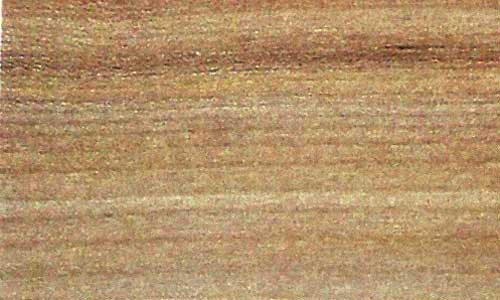
Characteristics
Country elm is a widespread plant in Italy and the wood is light to medium reddish brown. The lighter sapwood is generally well defined.
It is valued for its braided wood texture and consequent resistance to splitting.
Origin
Japan, Canada, Europe, North America.
Common use
Furniture, staircase railings, coffins.
Workability
Fairly easy to machine.
Mechanical properties
Poor dimensional stability. Wood must be carefully seasoned to avoid sagging or cracking.
Iroko
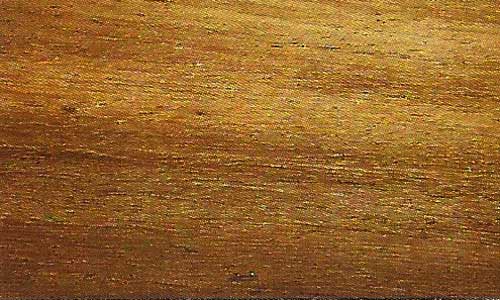
Characteristics
The heartwood is usually yellow to golden or medium brown, with a colour that tends to darken over time. The pale yellow sapwood is clearly distinct from the heartwood.
Origin
Equatorial Africa.
Current use
Used in shipbuilding and both interior and exterior joinery.
Very durable, excellent for stair treads and parquetry.
Workability
Generally easy to work, although it is slightly refractory to sawing.
Mechanical properties
Iroko is very durable and is resistant to both rot and insect attack.
It is also sometimes used as a substitute for Teak, of which Iroko wood can be regarded as a low-cost alternative.
Larch
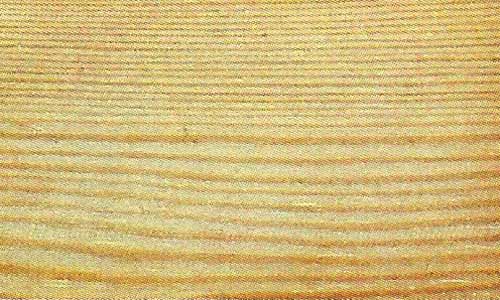
Characteristics
The trunk of the larch consists of a light-coloured, not very thick outer part and a reddish-brown, generally hard and heavy central part, which is perfectly preserved.
For these reasons larch wood is highly valued, especially in the Alpine region.
Origin
Europe.
Common use
Larch wood is excellent for all carpentry, joinery, water pipes etc.
Larch boards are often used for wooden roofs as they are very weather-resistant. These boards tend to sag, especially when thin, so adding weight to the roof by choosing the right type of tiles is essential.
Workability
Wood easy to work even if, being quite resinous, it is difficult to stain.
Mechanical properties
It has excellent mechanical qualities. It is similar in strength to spruce or oak.
It has little rigidity and poor impact resistance but is certainly one of the most durable woods known.
In the Alpine area, the wood is often used in the construction of houses by placing the beams on top of each other; under the action of the sun, the resin drips and welds the gaps and the walls of those houses become impenetrable to air and humidity.
Limba
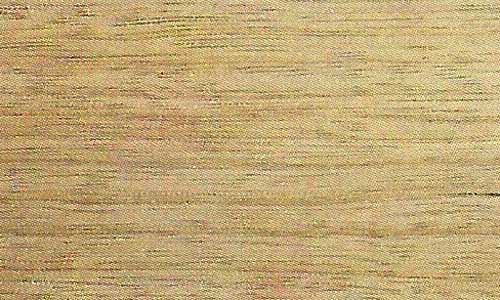
Characteristics
The heartwood (the inner part of the trunk) is light yellow to golden brown in colour, sometimes with grey to almost black streaks.
Wood with such darker streaks is called black limba, while undefined natural wood is called white limba.
Sapwood (the outermost part of the trunk) is pale brown, greyish to yellowish.
The colour tends to darken with age.
The wood fibres are straight and even.
Origin
Equatorial Africa.
Common use
The most common uses of Limba wood are for veneer, plywood, furniture, musical instruments (electric guitar bodies) and turned objects.
Workability
Easy to work both manually and with machine tools.
Contains a small amount of silica, but the dampening effect on cutters is generally low.
It glues and finishes well.
Mechanical properties
Not very durable and with poor impact resistance.
Lime
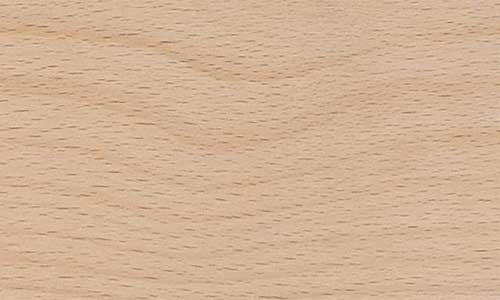
Characteristics
Lime wood is in great demand in industry due to its white colour, lightness, fine-grained homogeneity, tenderness and flexibility.
Origin
It grows in various parts of Europe and the world, where it is found in mixed deciduous forests in rather sunny environments. About twenty-five species belong to the genus Tilia, many of which are not easily recognisable.
Common use
While it serves well for cabinet-making, carving, sculpture and plinth work, it is not very suitable for construction, given its lightness, fragility and poor resistance to atmospheric variations.
Workability
It is easy to work without splintering and is not susceptible to woodworm. It is an odourless wood, even during processing.
Mechanical properties
The specific weight of the wood is 0.63 at normal humidity and 0.90 in the fresh state.
Since it is light and does not require much effort to cut, it was used in various ways in Europe until the late Middle Ages (such as for the creation of lightweight one-handed wooden shields).
Today, lime wood remains in great demand not only for the creation of small art and household objects, but it is also a wood of choice for lightweight shutters and blinds.
Maple
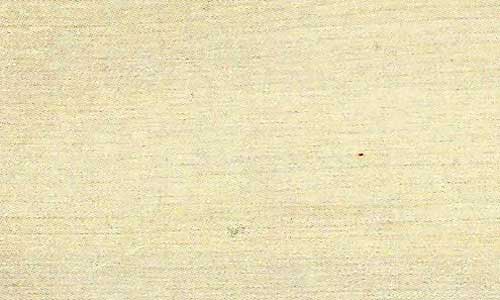
Characteristics
Maple wood is light-coloured, although there are several species.
Some maple woods have a highly decorative grain, known as flamed maple, quilted maple and briar.
These wood characteristics occur randomly on individual trees of different species and often cannot be detected until the wood has been sawn, although it is sometimes visible in the standing tree as a rippled pattern in the bark.
Origin
Europe and North America.
Common use
Maple wood is very durable and heavy.
Since maple wood is so strong and resistant to moisture, it is the ideal wood to withstand years of wear and tear, at least as far as hard maple is concerned (see below).
It is suitable for cladding, interior decoration, furniture, etc.
Workability
It has a medium aptitude for sawing and is overall quite easy to work.
Mechanical properties
It is a fairly perishable wood that has an average resistance to bending and a low resistance to shocks.
Of course, a great distinction should be made between hard and soft maple because the wood characteristics are quite different.
Although soft maple has excellent processing and functional characteristics for most interior joinery applications, it is (as its name suggests) softer than hard maple and is not suitable for wooden floors.
Meranti
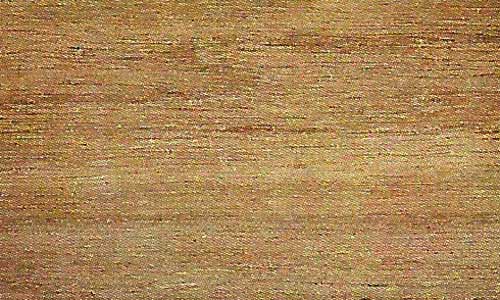
Characteristics
Generally, Meranti wood is dark reddish brown or purplish in colour, commonly with white resin streaks.
Origin
Philippines, Indonesia, Malaysia.
Common use
Plywood, interior furniture, general construction, concrete formwork, veneer and boat building.
Workability
Meranti dark red (the dark red variety) is said to have very poor vapour-bending properties.
Otherwise, it is easy to work, although any interlocked grain may present problems when planing.
Mechanical properties
Medium flexural strength. Medium impact resistance. Durable.
Oak
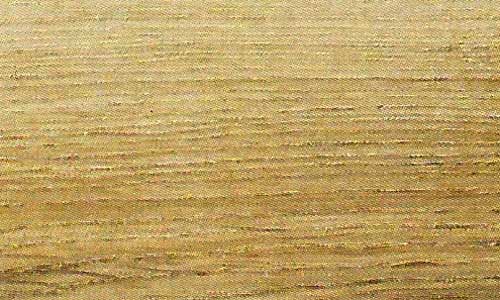
Characteristics
It would be more correct to speak of oaks, in the plural, since a number of trees belonging to the same family, such as turkey oaks, oaks and holm oaks, fall under this heading.
Oak is a strong wood and easier to work with when green.
Oak is a very popular wood, very durable and heavy. It is valued for its fine grain.
The wood is very resistant to insect and fungal attack due to its high tannin content.
Origin
It is one of the most popular plants in the world; where possible it is best to use domestic oak.
Common use
The use is practically unlimited.
Workability
As already written, the wood is much more workable when it is still rich in water, as it matures it becomes harder and tougher.
Mechanical properties
Long-lasting wood with medium impact resistance.
Pine
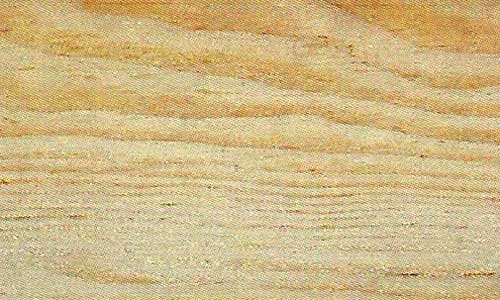
Characteristics
Pines are of considerable interest for the timber they provide.
Commercial pines are grown in plantations for denser, more resinous and therefore stronger timber than spruce.
The grain is straight, with a medium, even texture and a somewhat oily feel.
Origin
USA, Canada, Europe.
Current use
Pine is widely used for all types of construction, in carpentry and joinery, even for railway sleepers, before they were replaced by concrete sleepers.
Pine, along with fir, is the main timber for matchboarding.
Workability
Pine is very easy to work and, because most varieties are relatively soft, lends itself to carving. Pine is commonly used in furniture because it is easy to shape.
It glues and finishes well, although excess resin can sometimes cause problems with its ability to hold paint.
Mechanical properties
Durable type of wood, although it has poor to medium impact resistance and poor flexural strength.
Poplar
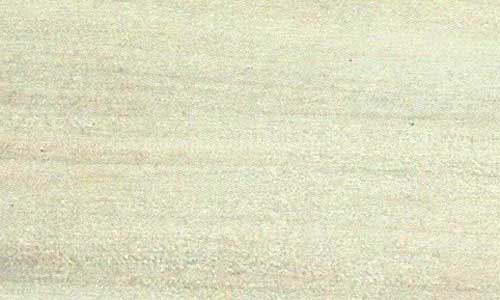
Characteristics
Plant grown in rows and very common in Italy. The wood is very light and tends to white. It is certainly not a valuable wood but it is widely used, especially for making plywood panels.
Origin
Europe, America, Canada.
Common use
Poplar is often used for the non-apparent parts of furniture, those that will be covered by more valuable veneers.
Workability
Very easy to process.
Mechanical properties
It is a rather perishable type of wood which does not exhibit particularly high mechanical properties.
Sapele
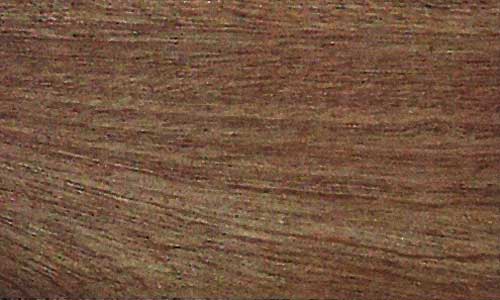
Characteristics
Sapele wood is reddish and similar in colour to American mahogany (Swietenia), with a tight weave and interwoven fibres, fine and uniform and with a good natural lustre.
Origin
Equatorial Africa.
Common use
Veneering, plywood, furniture, cabinetmaking, flooring, shipbuilding, musical instruments, turned objects and other small special wood objects.
Workability
Sapele can be problematic to work with during certain processing steps (e.g. planing, milling, etc.), resulting in splintering due to its interlocked grain.
It will also react when placed in direct contact with iron, discolouring and staining.
Mechanical properties
It is a robust type of wood, rather flexible, hard, compact and resists shocks well.
Spruce (Red Spruce)
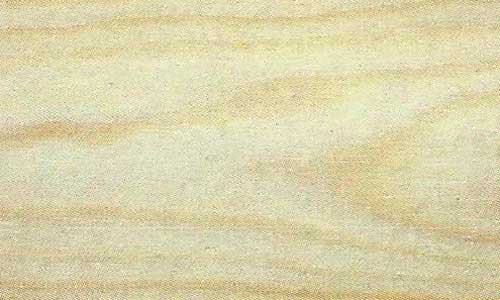
Characteristics
A cousin of white spruce, red spruce timber is generally more valued and regarded as more valuable. It has practically unlimited uses.
Origin
The area of origin of this tree is northern Europe, Finland, Sweden, Norway and Russia, as well as the Italian Alps.
Common use
It is used for interior and exterior joinery, furniture and flooring. Its wood is best used for making the soundboxes of many instruments, especially violins.
Workability
It is a soft wood easy to saw and work.
Because of its lack of knots, it is highly valued by shipbuilders, furniture makers and carpenters, who find spruce to be a wood that offers lightness, strength and a long working life at the same time.
Mechanical properties
It is an all round durable wood, although its resistance to impact and bending remains rather poor.
Much depends on the altitude at which the tree is grown: at higher altitudes it develops more slowly, but the wood grows evenly, uniformly and without knots.
Spruce (White Spruce)
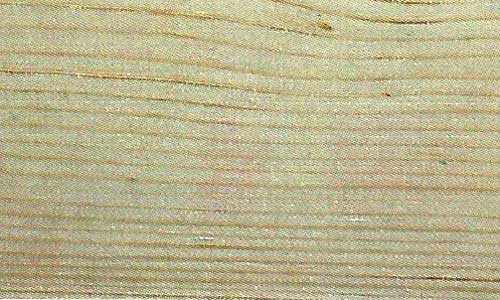
Characteristics
It is a light and rather soft wood. It is light-coloured and has red veins. It is one of the most widely used of the various woods due to its characteristics.
Origin
It grows in various parts of Europe, often in interspersed areas and coexisting with other tree species. It is found at altitudes between 500 and 2000 metres.
Common use
Popular in Japan, where it is used for the construction of earthquake-resistant houses, silver fir is used for many carpentry jobs, for floors and for both interior and exterior joinery.
It is widely used, together with pine, for making matchboarding boards because, although it is a conifer, it is not a very resinous wood and with the right impregnant it takes on the colour you want.
Workability
Since it is a soft wood, it is also easily workable and easy to saw.
Mechanical properties
Overall, the wood is not very durable and is easily attacked by woodworms. Not very resistant to bending and impact. Unsuitable for furniture.
Teak
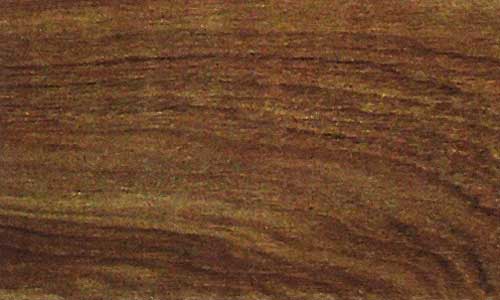
Characteristics
Teak wood has a beautiful yellowish-brown colour and lends itself well to polishing, which makes it particularly popular with the furniture industry.
Origin
Burma, Siam, Indochina, India, Indonesia.
Current use
Shipbuilding, veneering, exterior construction, carving, turning and other small wooden objects.
Teak furniture is excellent for the garden as it resists the weather very well.
Workability
Teak is easy to work with, despite its hardness.
Despite its natural oils, teak usually glues and finishes well, although in some cases it may be necessary to clean the surface of the wood with a solvent before gluing and/or finishing, to reduce the natural oils on its surface.
Mechanical properties
Teak is one of the most valuable hardwoods, due to its beauty and exceptional resistance to both mechanical stress and weathering.
Neither excessive drought nor humidity can damage this type of wood.
Almost no insects attack it, probably because of the resinous oil contained in the wood.
Walnut
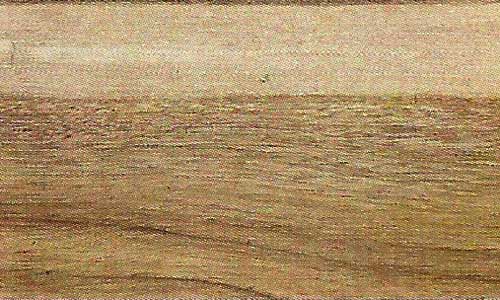
Characteristics
Walnut is a type of hardwood and is known for its strength, straight grain and rich chocolate brown colour, although lighter shades are also available.
Walnut is a very versatile wood, offering a range of shades and grains to suit any decor.
Origin
Domestic walnut is preferred. Other areas of origin are Europe in general, Asia Minor and North America.
Common use
Walnut furniture is one of the most popular. Other uses include cabinetmaking, decoration and sculpture.
Because the walnut tree is very slow-growing, its wood, especially in large planks, is considered valuable.
Workability
Easy to work and susceptible to fine polishing.
Mechanical properties
Homogeneous and heavy wood, highly appreciated because it does not undergo deformation during drying.
Wenge
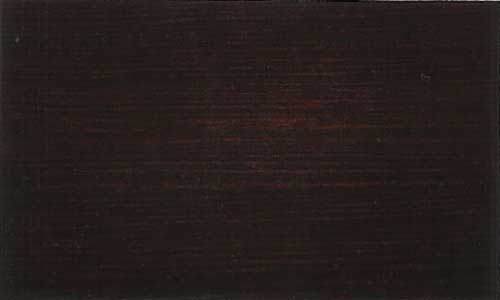
Characteristics
Exotic wood whose heartwood is medium brown, sometimes with a reddish or yellowish hue, with almost black streaks.
With the application of a finish (especially an oil finish) the wood can become almost black.
Origin
Zaire, Cameroon, East Africa.
Common use
Used for veneering, panels, furniture, turned objects and musical instruments, cabinetmaking and parquetry.
Workability
Can be difficult to work with machine tools and hand tools.
Wood prone to splintering: Care should be taken when handling unfinished wood with bare hands, as splinters may cause infection.
Very large pores may be difficult to fill if a perfectly smooth and level finish is desired.
Mechanical properties
High impact resistance. High flexural strength. Very durable.
Wild Cherry
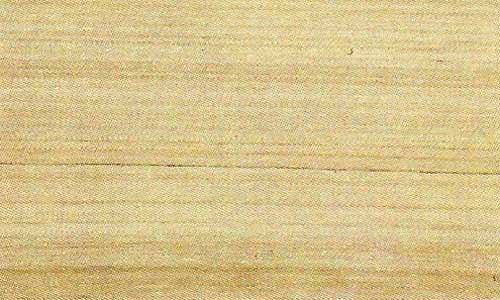
Characteristics
Cherry wood is one of the most popular but also one of the most expensive woods.
The wood generally comes from the wild species that grow wild in the woods and the colour varies from yellowish to reddish-brown.
Origin
Europe.
Common use
It is mainly used for fine cabinetmaking and interior decoration. Its irregular grain and tendency to take on a shiny appearance after polishing make it a highly prized wood.
Furniture made from cherry wood tends to look very similar to furniture made from another fine wood such as mahogany.
Workability
It is a fairly hard and tough wood, but it is fairly easy to work.
Mechanical properties
It fears humidity and tends to warp easily when the wood has not been properly seasoned.
It has average resistance to bending and impact.
The durability is also fair, always when it comes to wood intended for indoor use.


